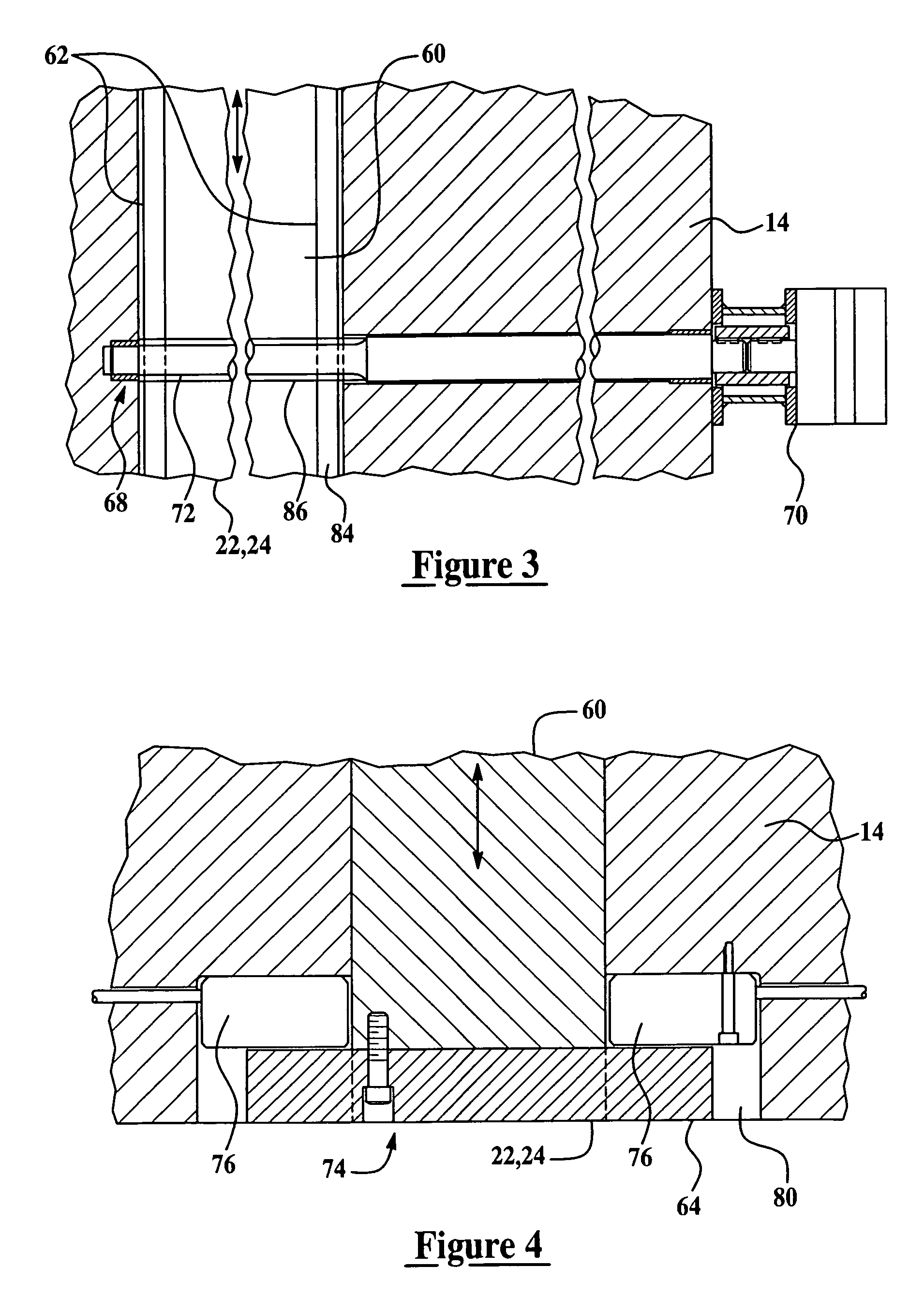Engine block die-casting apparatus having mechanically actuated bank core slides
a technology of die-casting apparatus and core slide, which is applied in the direction of metal-working apparatus, mold handling equipment, manufacturing tools, etc., can solve the problems of high operational and maintenance costs, substantial waste of die-cast parts, and cost-effective solutions, and achieves enhanced dimensional stability of the bank core slide assembly, high repeatability, and high repeatability
- Summary
- Abstract
- Description
- Claims
- Application Information
AI Technical Summary
Benefits of technology
Problems solved by technology
Method used
Image
Examples
Embodiment Construction
)
[0022]The engine block die-casting apparatus of the present invention is generally indicated at 10 in FIG. 1. It should be appreciated by those having ordinary skill in the art that the engine block die-casting apparatus 10 of the present invention may be configured to produce a variety of engine block types having any number of cylinders. However, as an illustrative example, the engine block die-casting apparatus 10 described herein is configured to produce “V” type engine blocks. Referring to FIG. 1, the engine block die-casting apparatus 10 includes a stationary element 12, an ejector holder block 14 adapted to be operatively movable to and from said stationary element 12, an ejector box 16, a pair of side core slides 18 and 20, and at least one bank core slide assembly slidably mounted to and operatively moveable within the ejector holder block 14 that is adapted to be mechanically actuated. In the preferred embodiment illustrated in FIG. 1 where the apparatus 10 is configured ...
PUM
| Property | Measurement | Unit |
|---|---|---|
| adhesion | aaaaa | aaaaa |
| temperature | aaaaa | aaaaa |
| pressures | aaaaa | aaaaa |
Abstract
Description
Claims
Application Information
 Login to View More
Login to View More - R&D
- Intellectual Property
- Life Sciences
- Materials
- Tech Scout
- Unparalleled Data Quality
- Higher Quality Content
- 60% Fewer Hallucinations
Browse by: Latest US Patents, China's latest patents, Technical Efficacy Thesaurus, Application Domain, Technology Topic, Popular Technical Reports.
© 2025 PatSnap. All rights reserved.Legal|Privacy policy|Modern Slavery Act Transparency Statement|Sitemap|About US| Contact US: help@patsnap.com



